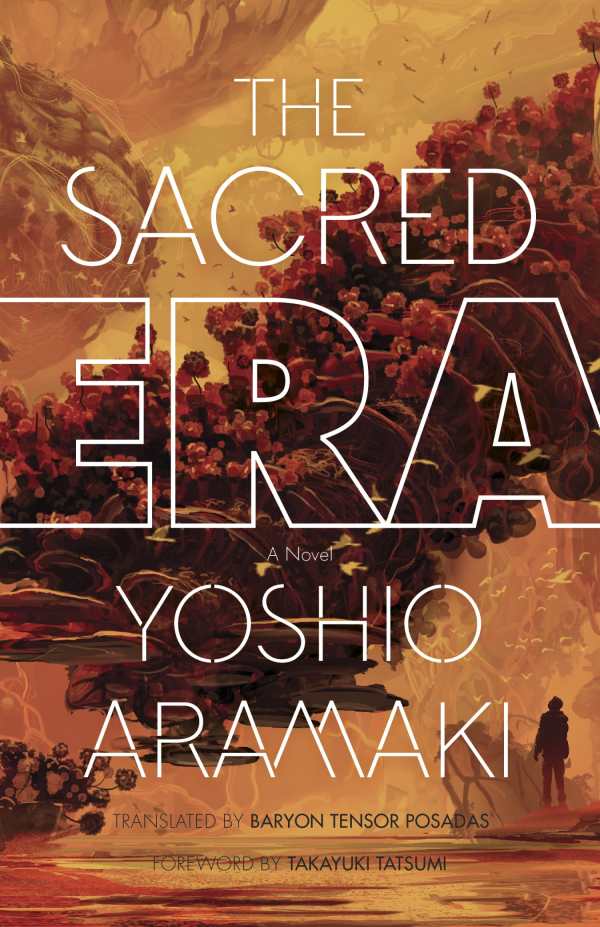The Sacred Era
The novel includes a profound commentary on the relations of humans to time, space, and the divine.
Japanese speculative-fiction master Yoshio Aramaki plays with religious and philosophical textures against a science-fiction canvas in The Sacred Era.
Arguably Aramaki’s magnum opus, the novel centers on the journey of a boy called simply K, who lives in a time when Earth is ruled by an ecclesial organization modeled on the Catholic Church: the Holy Empire of Igitur, which rejects Trinitarianism as heresy and replaces the concept with that of a Quadrinity.
This framework establishes an intriguing and challenging thought experiment in which Aramaki offers up the shoes of the heretic and points to the grooved paths over which they have trod.
When K is selected to take the Sacred Service Examination to determine his life’s trajectory, he passes despite the unorthodox nature of the questions, including one that invites him to defend the heresies of Darko Dachilko, long since condemned to death by the Holy Empire.
K is assigned to the research team in charge of investigating the mysterious Planet Bosch—a reference to Hieronymus Bosch, whose painting The Garden of Earthly Delights figures prominently in the novel. Following required spiritual training at the Holy Igitur Monastery, K embarks on a Dantean pilgrimage across space, passing from a hellish, impoverished Earth to the purgatorial planet Loulan, and finally achieving the verdant paradise of Bosch.
Along the way, K must grapple with his understanding of orthodoxy according to the Holy Empire contrasted with the hypocrisy he perceives in its very leadership. The complexities of his relationship to Darko Dachilko slowly unravel into a profound commentary on the relations of humans to time, space, the divine, and each other.
The prose powerfully carries the narrative and captures the surrealism present without superfluous ornamentation. In addition, the novel’s foreword by Takayuki Tatsumi provides a helpful if brief background on Aramaki and Japanese speculative fiction for the uninitiated. The novel is, at the surface, easy to comprehend while veiling provoking insights that demand lingering meditation for those open to entertaining existential questions.
Engrossing in both its imagery and philosophical explorations, The Sacred Era traverses the far reaches of the cosmos but ultimately revels in the personal and the human.
Reviewed by
Meagan Logsdon
Disclosure: This article is not an endorsement, but a review. The publisher of this book provided free copies of the book to have their book reviewed by a professional reviewer. No fee was paid by the publisher for this review. Foreword Reviews only recommends books that we love. Foreword Magazine, Inc. is disclosing this in accordance with the Federal Trade Commission’s 16 CFR, Part 255.

